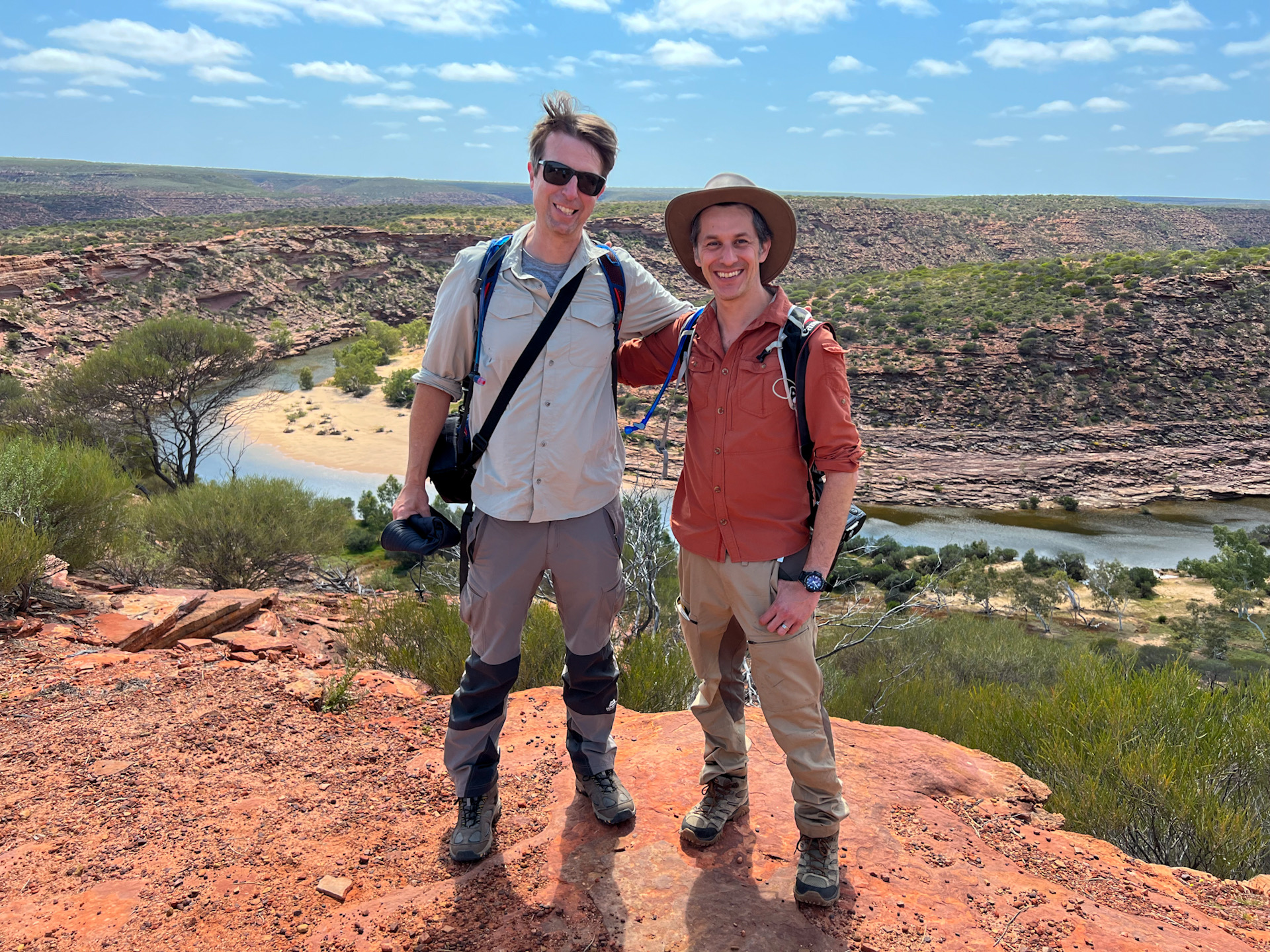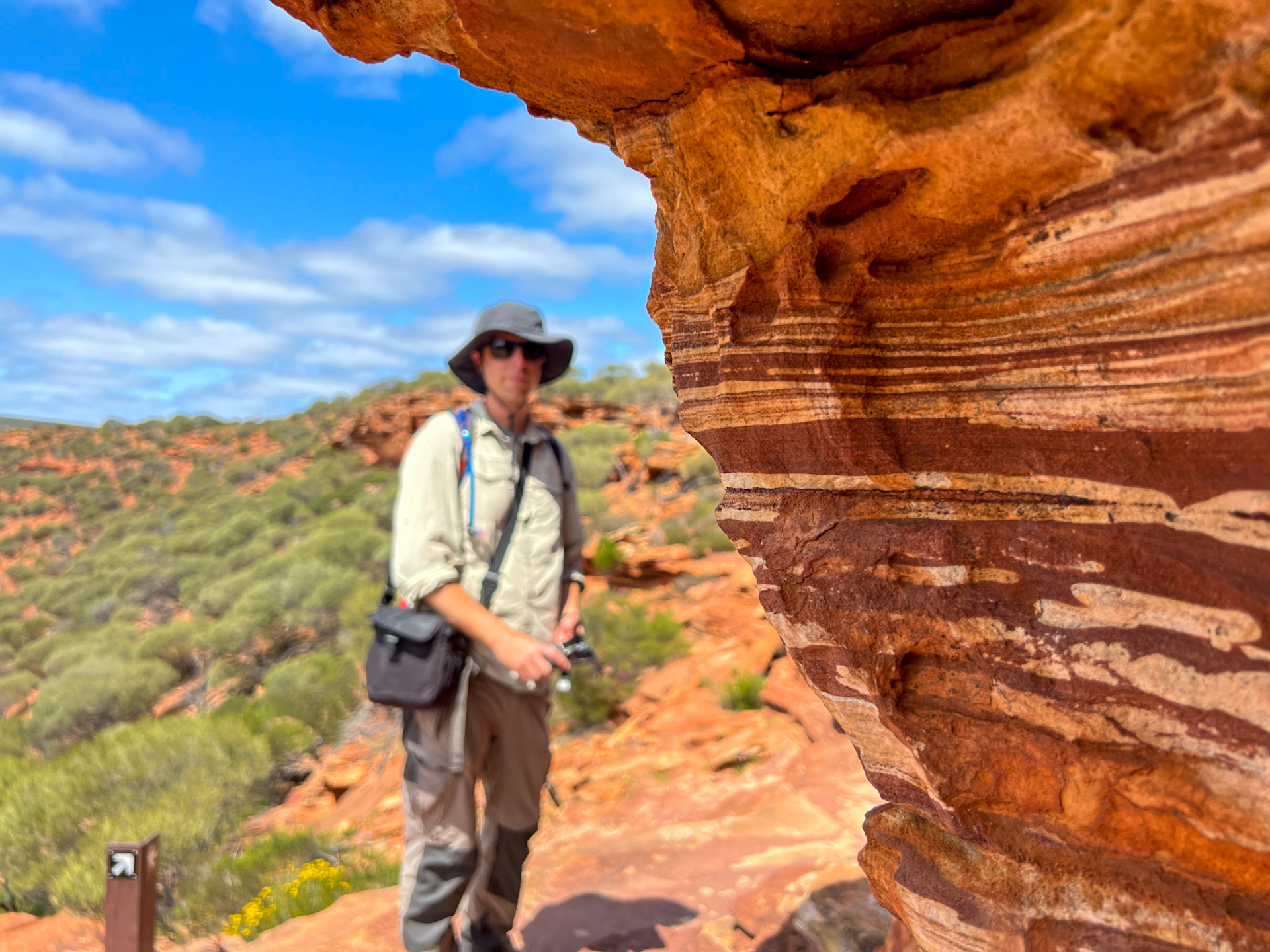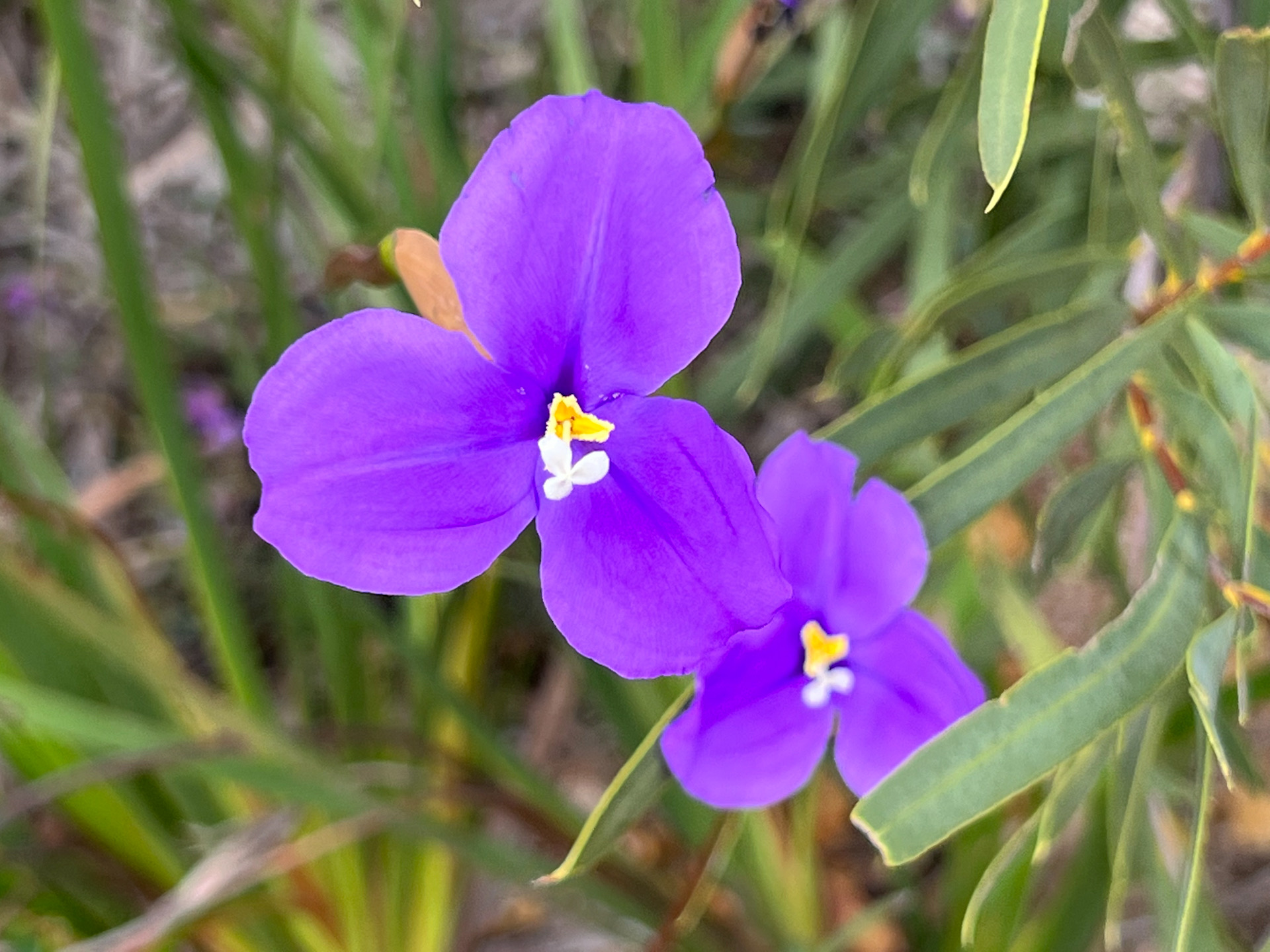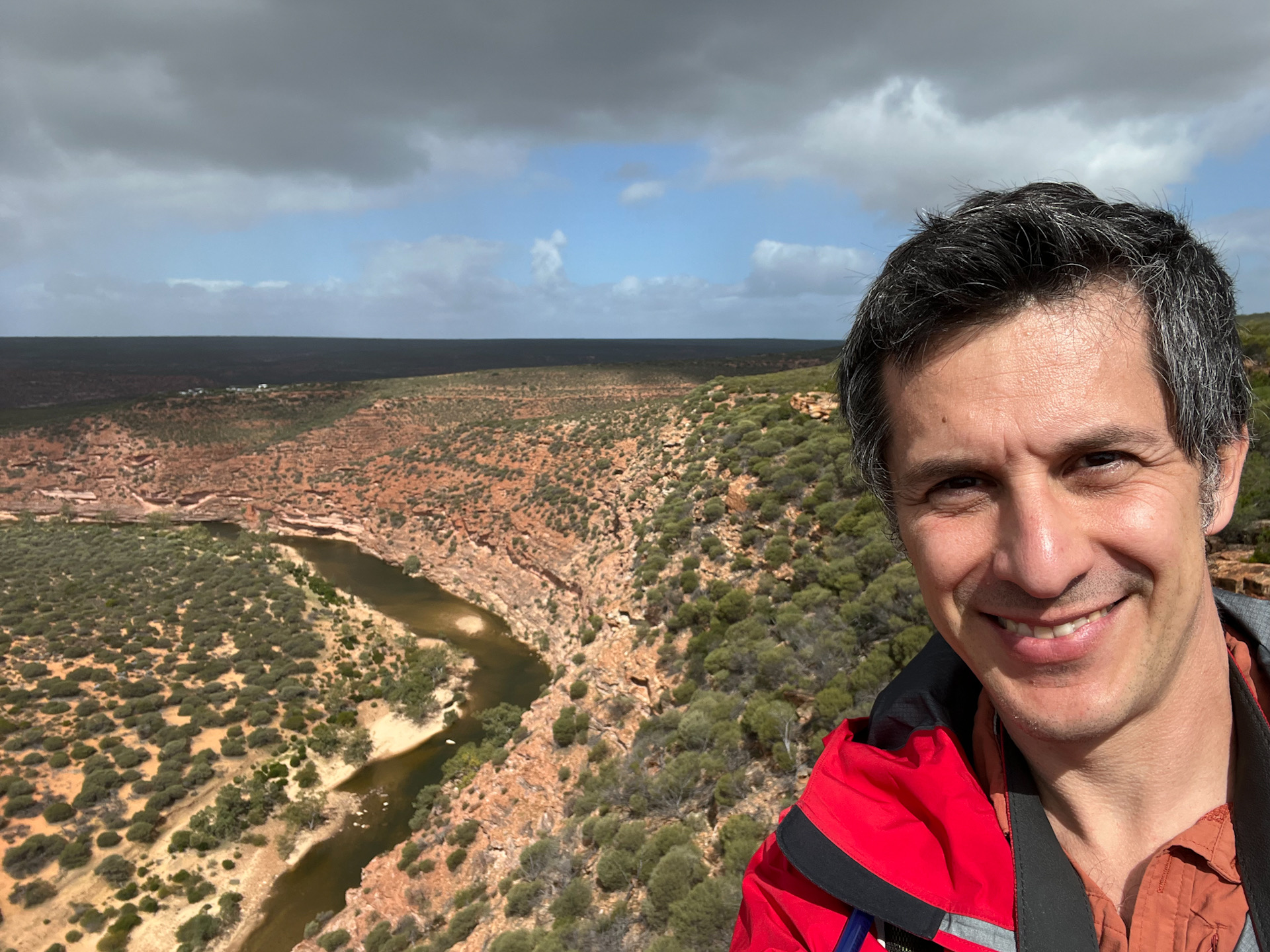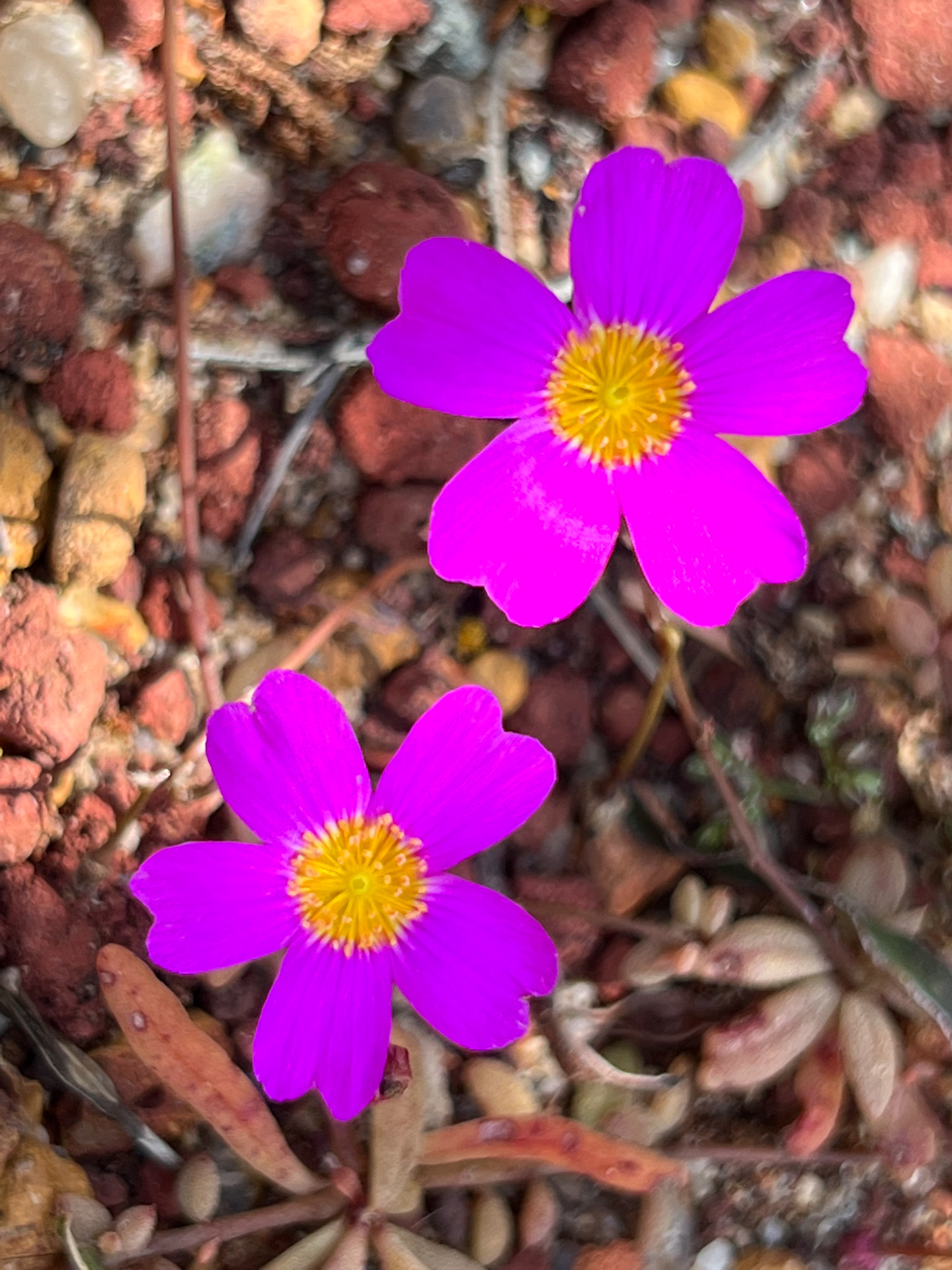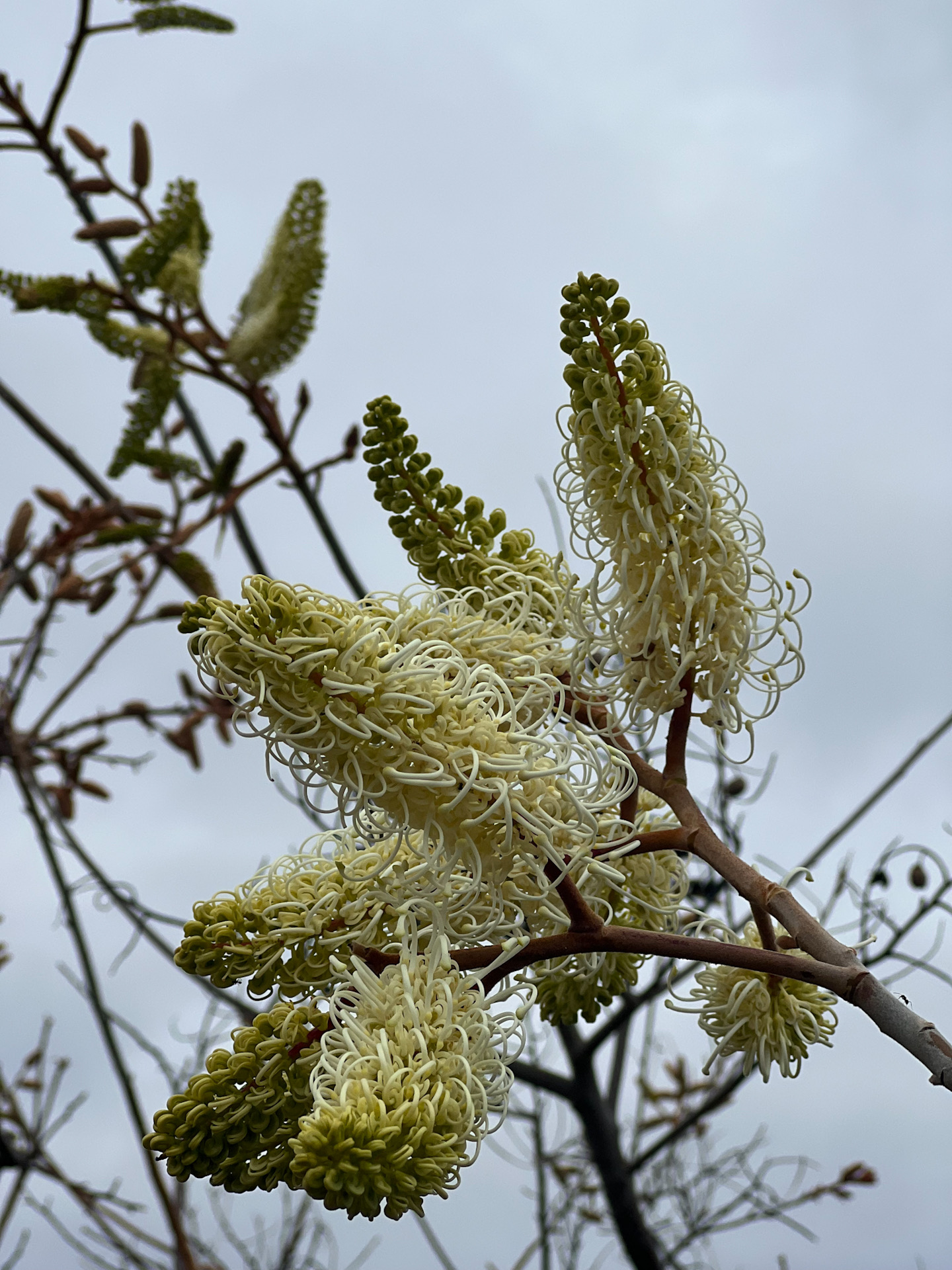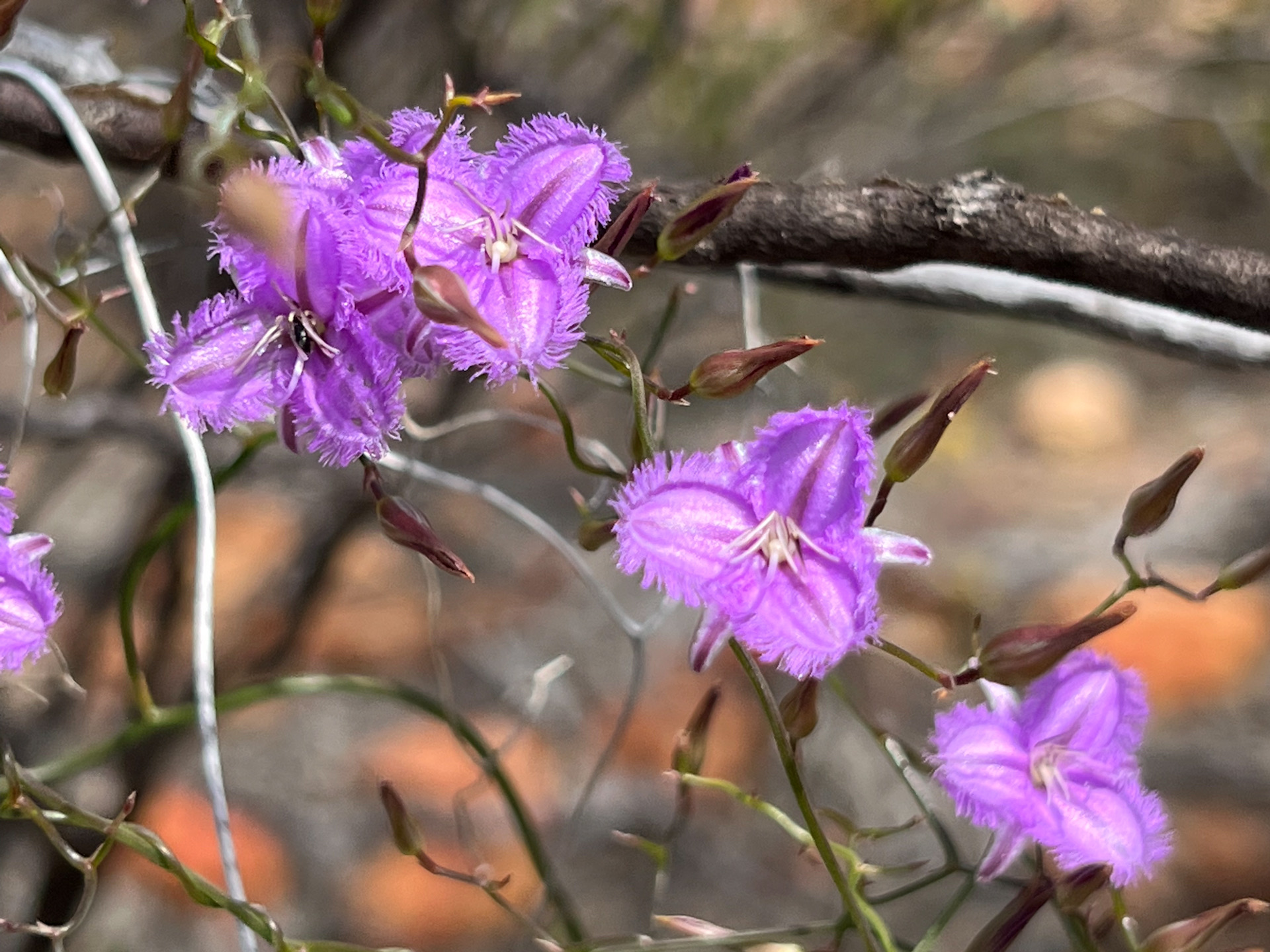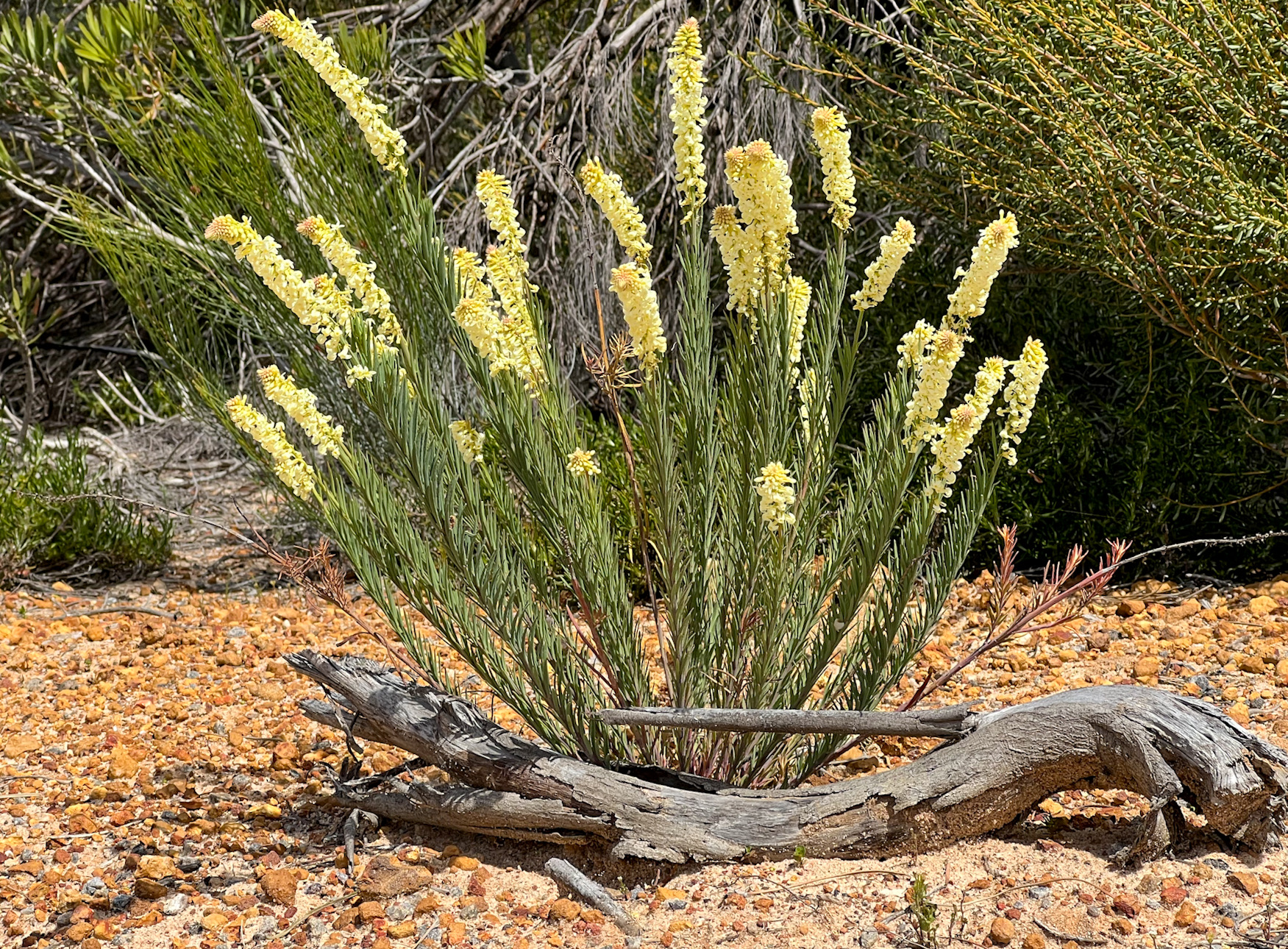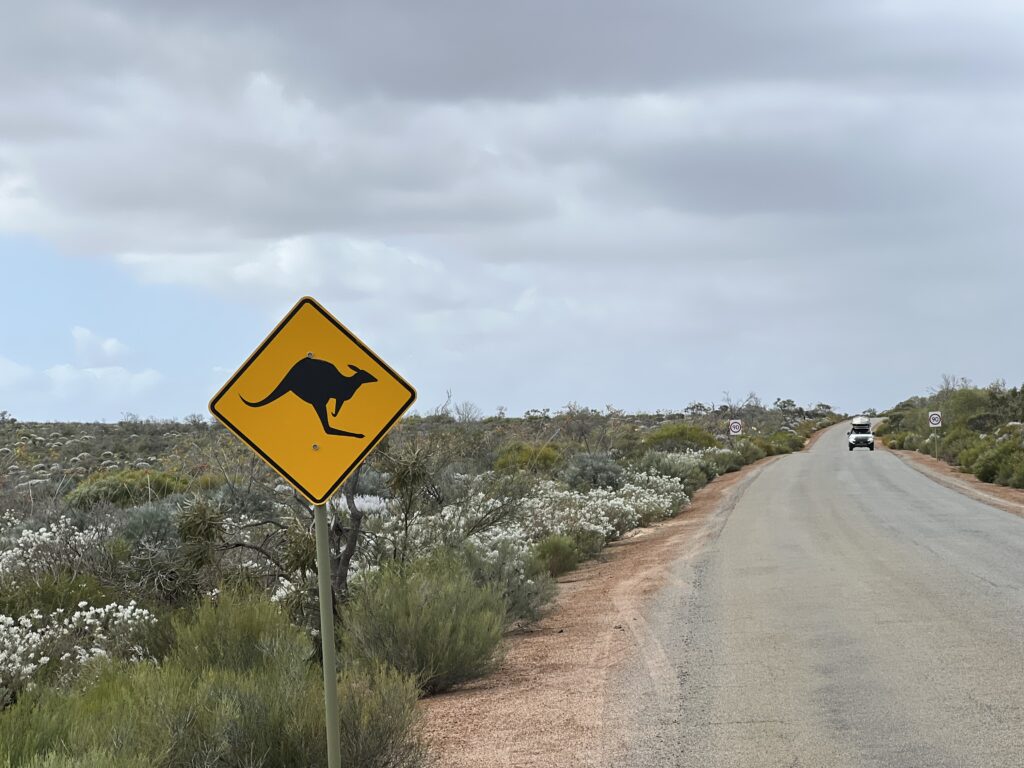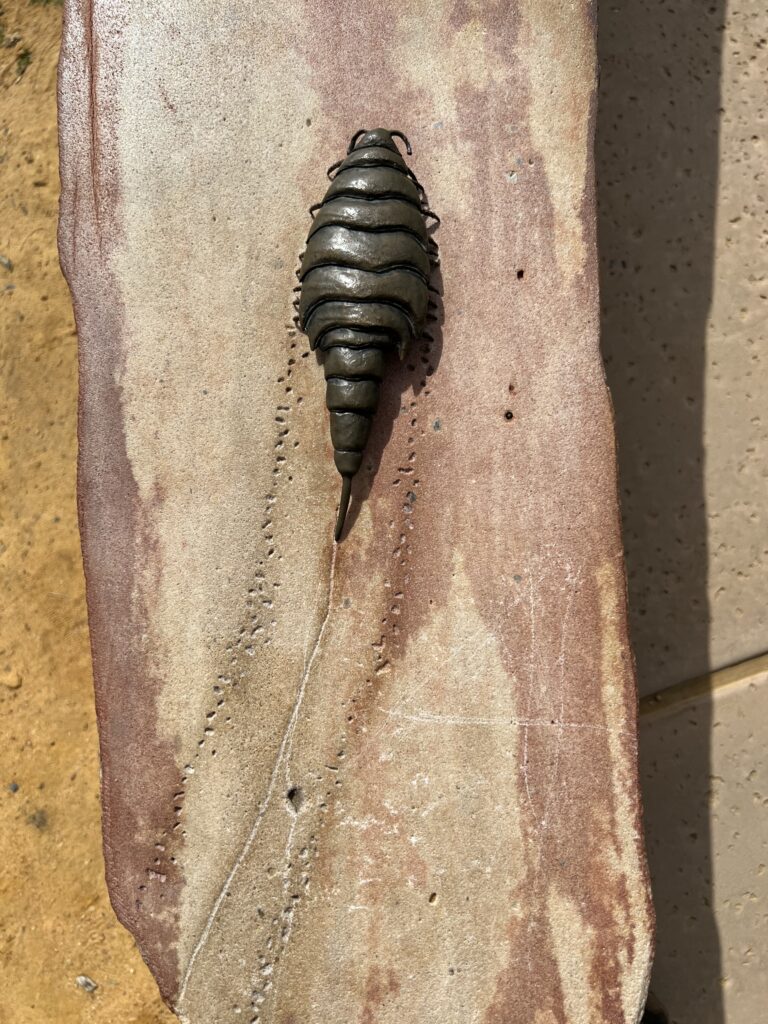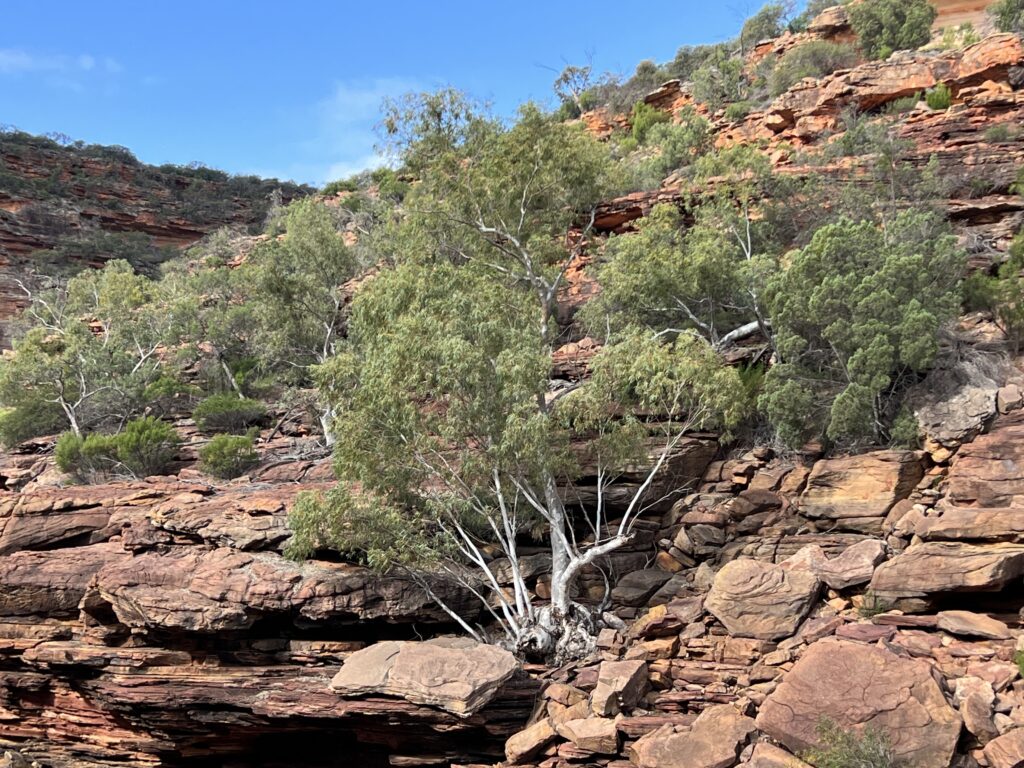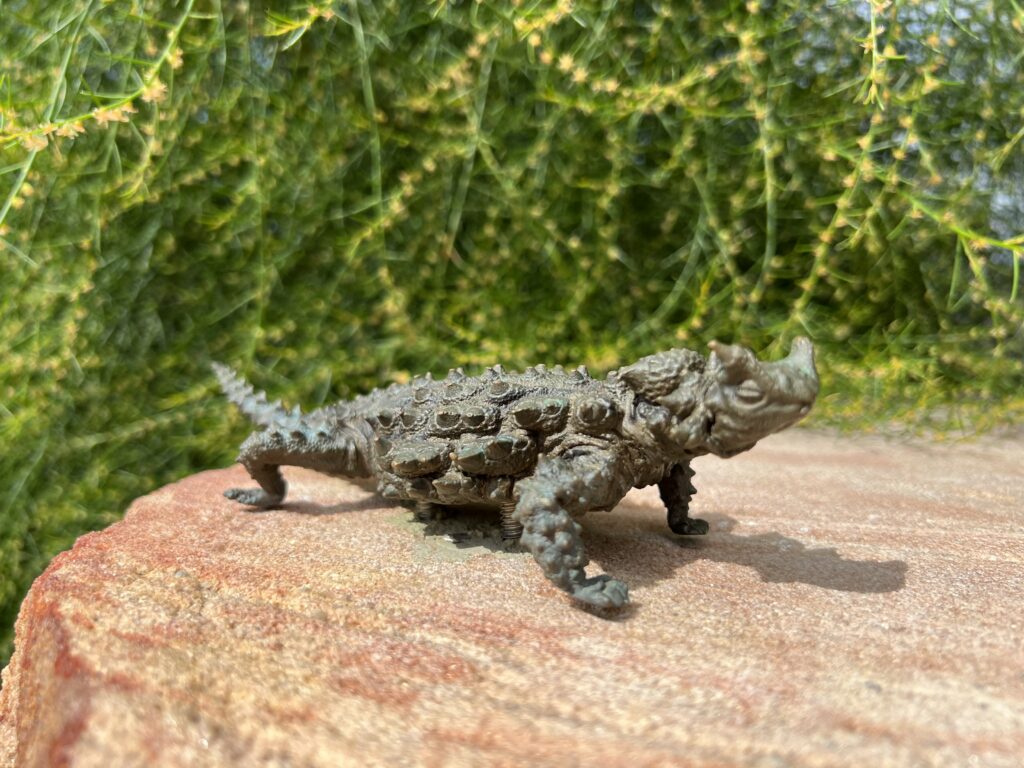21 September. Last night we stayed in a caravan park in Greenhough. The friendly staff treated us to a story of walking the Way of Santiago, a trail that extends 700km in a journey to Santiago de Compostela, Spain. The rusty showers and swallows nesting in the entrance to the laundry room adds character to a place that seems to exist in the strange dimension of roadsides. Unsurprisingly, we chat about David Lynch over breakfast.
In the morning, we continue driving south, and we start the day with procession of 1960’s race cars that pass us in the opposite direction. We try to stop more rarely, but patches of Solanum distract us. We reach then Badgingarra National Park and quickly becomes the highlight of the day. A lunch break under a willow look-alike tree that is more closely related to guavas and Eucalyptus (Myrtaceae) than to willows (Salicaceae). Then a quick walk (no wild bees in sight), and the flower fest continues. Too numerous to name them now, we continue recording and photographing flowers. David spots a striking buzz-pollinated flower in the family Malvaceae (think hibiscus, mallow flowers but then transform them into some sort of tomato flower mimic). We photograph it and continue talking about follow up projects.
Late that evening we reach Perth and pack and clean the Buzz Bus. David and I say good bye after I drop him off at his family home. It has been a fantastic trip and we make plans for the analysis and write up of the data we are collecting. It has been great to have David’s expertise and knowledge of the flora of Western Australia and I have learned lots from him over the last eight days on the road.
Tonight I will stay in a hotel near the airport. Tomorrow I fly to Brisbane to meet Daniel Montesinos and start the second leg of the expedition.
